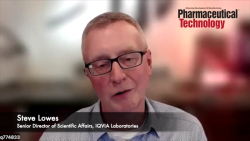
OR WAIT null SECS
- About Us
- Advertise
- Contact Us
- Editorial Info
- Editorial Advisory Board
- Do Not Sell My Personal Information
- Privacy Policy
- Terms and Conditions
© 2025 MJH Life Sciences™ , Pharmaceutical Technology - Pharma News and Development Insights. All rights reserved.
FDA Releases Draft Guidance for Cell-Based Vaccine Development
ePT--the Electronic Newsletter of Pharmaceutical Technology
Rockville, MD (Sept. 28)-The US Food and Drug Administration has released the draft guidance for industry ?Characterization and Qualification of Cell Substrates and Other Biological Starting Materials Used in the Production of Viral Vaccines for the Prevention and Treatment of Infectious Diseases.?
Rockville, MD (Sept. 28)-The US Food and Drug Administration (www.fda.gov) has released the draft guidance for industry “Characterization and Qualification of Cell Substrates and Other Biological Starting Materials Used in the Production of Viral Vaccines for the Prevention and Treatment of Infectious Diseases” (www.fda.gov/cber/gdlns/vaccsubstrates.pdf). The document covers cell substrates of human or animal origin and applies to the characterization and qualification of viral seeds. Its scope does not include the characterization of unicellular organisms such as bacteria and yeast.
Vaccines based on live attenuated viruses, live viral vectors expressing vaccine antigens, inactivated whole or subunit virions, purified recombinant proteins, and virus-like particles may require novel human and animal cell substrates for manufacture. As acknowledged in the guidance, “Due to the absence or limited experience with new cell substrates, manufacturers should develop and apply the best technologies available to assure that these new cell substrates are safe.” Toward this end, the draft guidance discusses properties of the cell substrate, cell banking, viral seeds, biological raw materials, and quality control testing methods, including tests for adventitious agents and cell properties.
The recommendations provided in the guidance may be used to support biologics license applications or an application for an investigational new drug. The new information pertaining to viral vaccines replaces that presented in the 1993 document “Points to Consider in the Characterization of Cell Lines Used to Produce Biologicals.”



